Yoga for Neck Pain: 2 Relaxing Poses
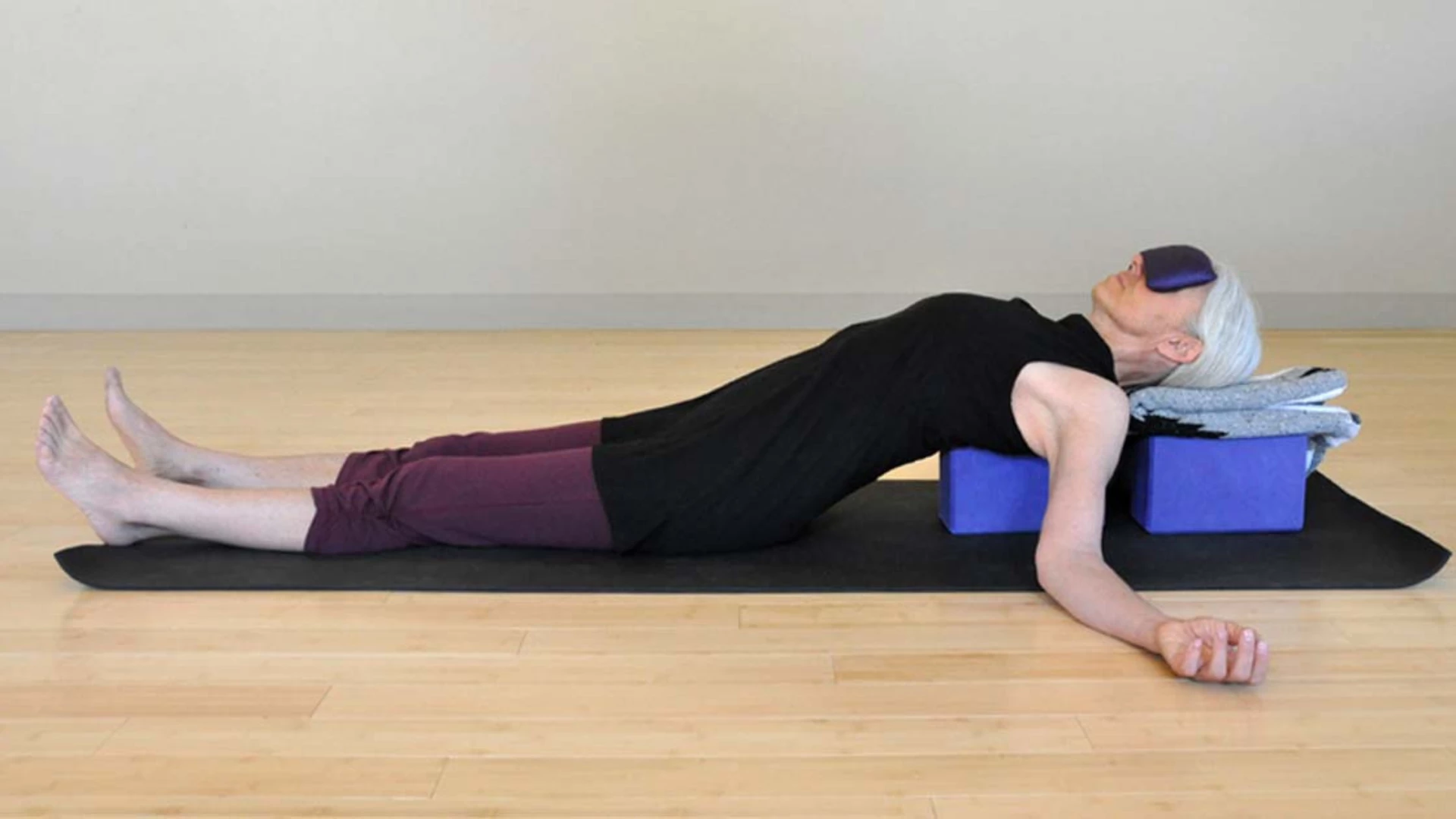
Article At A Glance
According to Harvard Health, 80 percent of people experience neck pain at some point in their lifetime. There are many reasons for this—our necks’ inherent mobility, our postural habits, and the 21st-century malady called “text neck.” Knowing how to adjust our posture and practicing yoga for neck pain can help alleviate neck strain. Here are some suggestions to help free your neck.
Do you experience neck pain? If so, you’re not alone. According to Harvard Health, some 80 percent of people experience neck pain at some point in their lives. If you practice yoga, you may be ahead of the game. Yoga for neck pain can alleviate symptoms. But first, why are humans so susceptible to neck pain in the first place?
What Can Cause Neck Pain?
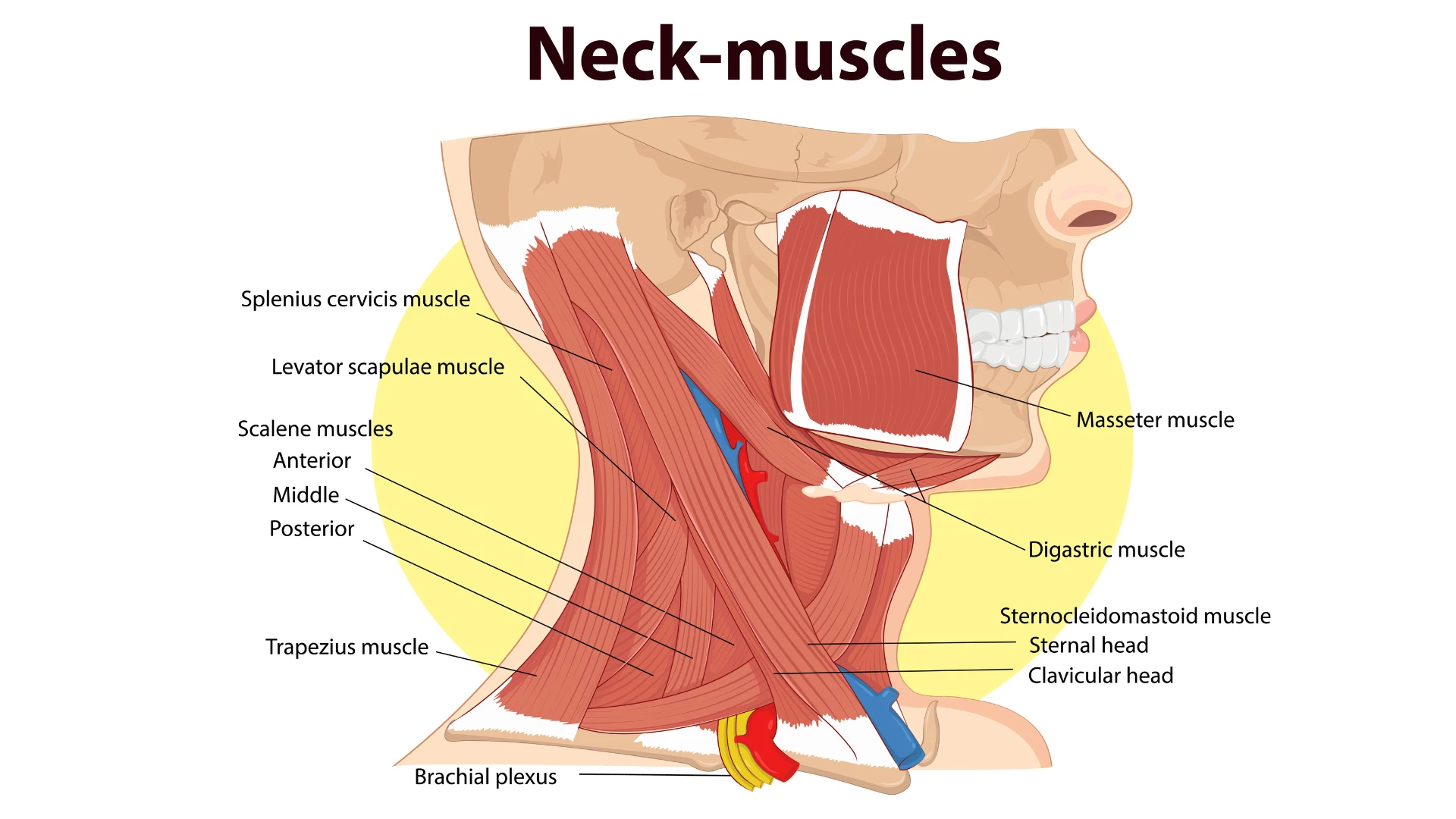
The cervical spine—the section of the spine that goes through the neck—is the most delicate part of the spine. Unlike the other sections, the sacral, lumbar, and thoracic regions, the neck is capable of movement in all planes. This means the neck can flex, extend, rotate, and bend laterally. No other section of the spine can perform all these movements.
The vertebrae in our necks are quite a bit smaller and more delicate than those in the rest of the spine. In addition, when you compare the size of the pelvis, abdomen, and thorax to the size of the neck, you can easily see there are not a whole lot of protective structures around our neck vertebrae. Add to this the problems inherent in bending forward to look at our devices much of the day (text neck). So there’s ample reason that many of my students come to classes complaining of neck pain.
I’m not exempt from this syndrome. I’ve had several whiplash injuries and some harmful dental/orthodontic work that have made my neck especially vulnerable. As a result, I’ve had to learn how to keep my neck safe and happy during yoga practice. What follows are suggestions for practicing yoga for neck pain that I’ve found useful in my own practice and for my students.
Body Awareness Can Prevent Neck Strain
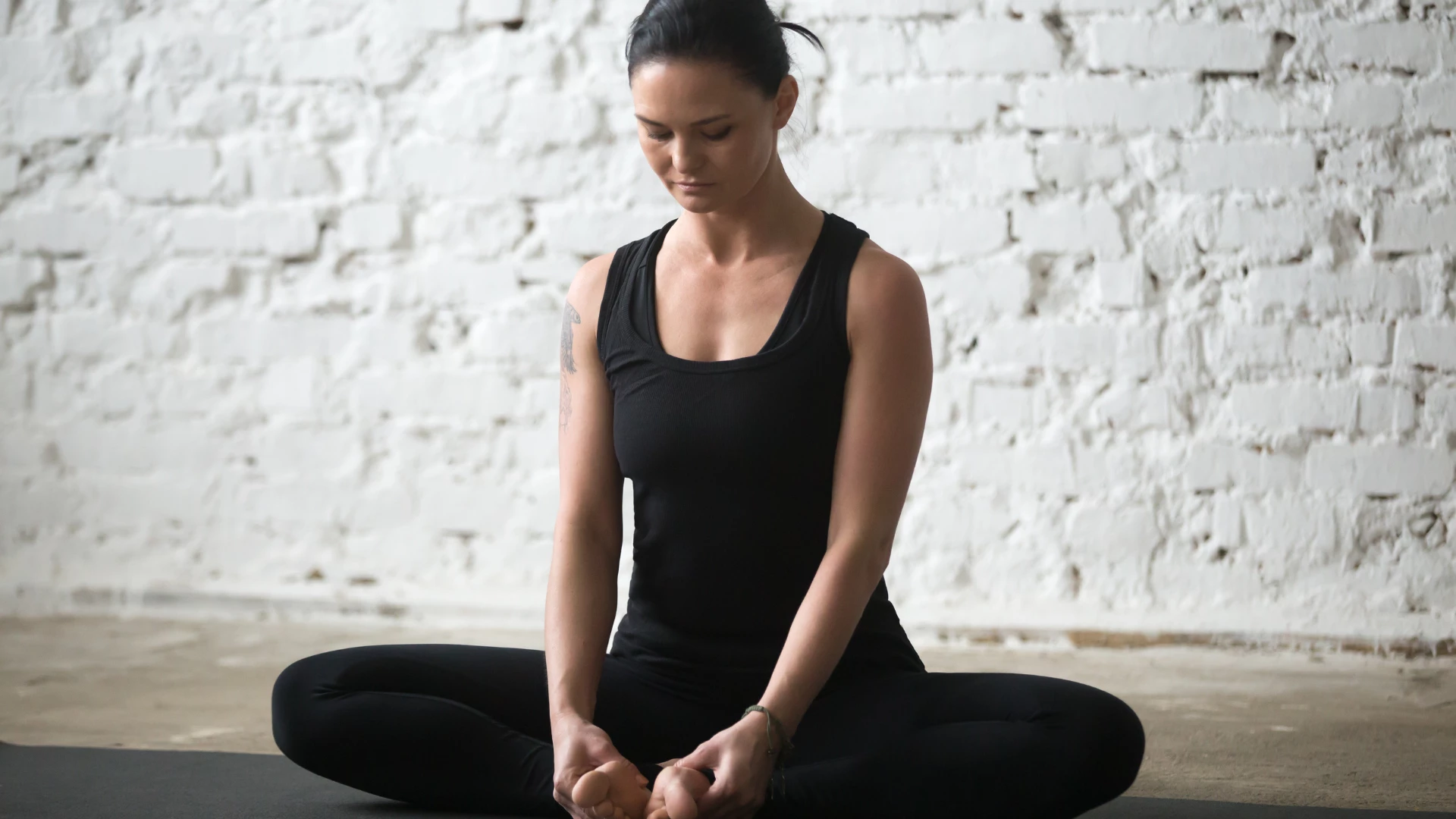
There are several ways to approach yoga for neck pain. The first is prevention: the intention to do no harm during practice. No one comes to class hoping to leave with a stiffer neck than they came with. From my experience, the most important element of preventing neck pain is to keep your head connected.
This means turning your awareness inward and feeling what is actually happening in your head and neck in every asana. I’ll suggest a couple of my favorite neck-release poses below, but preventing neck pain in the first place is even more important. Connecting your head and relaxing your jaw are two ways to prevent further neck pain in practice.
Yoga for Neck Pain: Connect Your Head
Of course, I’m not implying that we literally lose our heads in practice. But it’s true that we often overextend our necks and put our heads in vulnerable positions in order to achieve what we think is the “fullest expression” of a pose. For example, we might throw our heads back in Cobra Pose (Bhujangasana). Because this causes the hyoid bone to jut forward in the throat, throwing our heads back in Cobra compresses the back of the neck and causes strain in the low back. 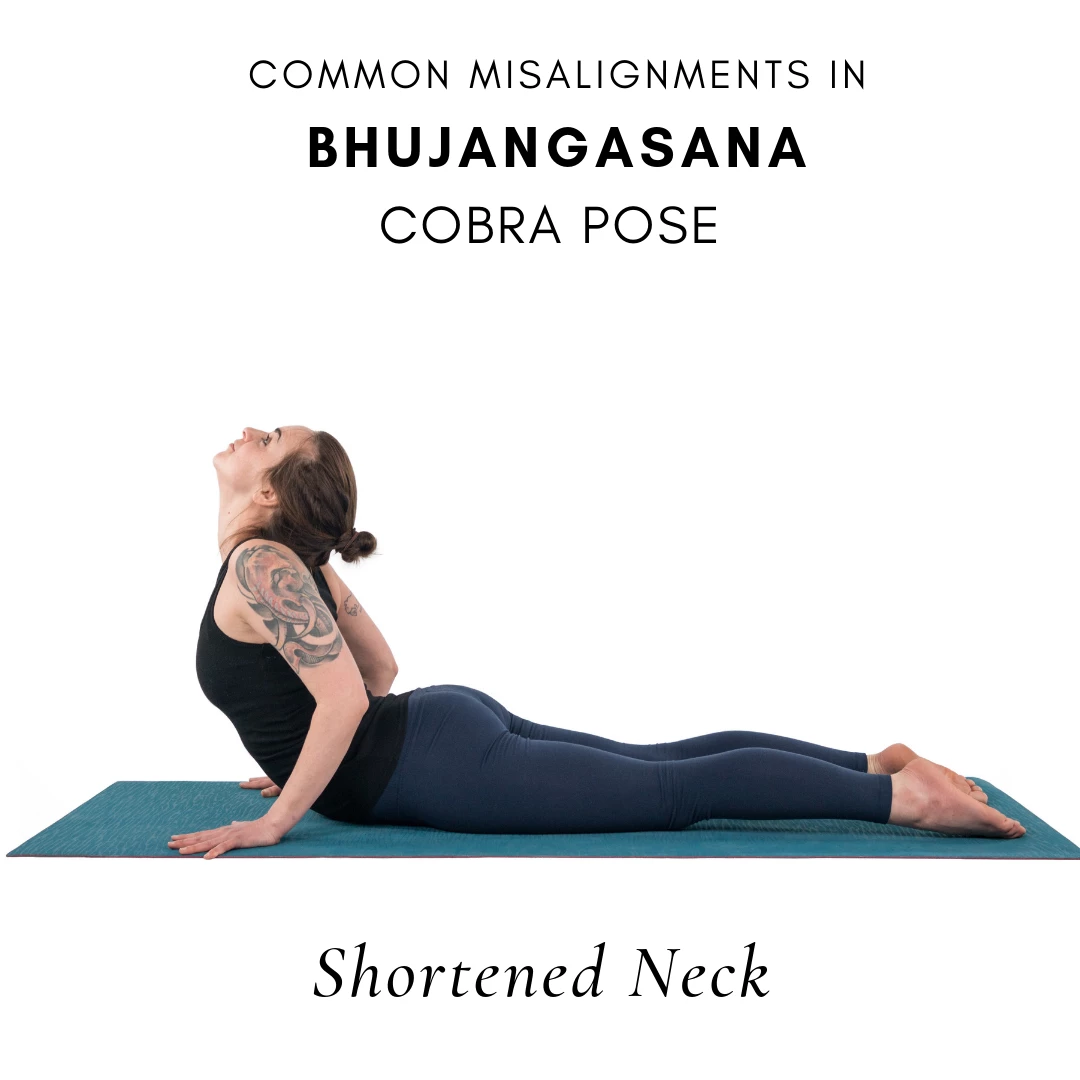
Another common head disconnect is lifting the head in forward bends such as Standing Forward Bend Pose (Uttanasana), especially in Pyramid Pose (Parsvottanasana). People often lift their heads in these poses to avoid the intensity in their hamstrings or in the effort to straighten their spines, but the result is that they create neck tension. Instead, lengthen the back of your neck in these poses.
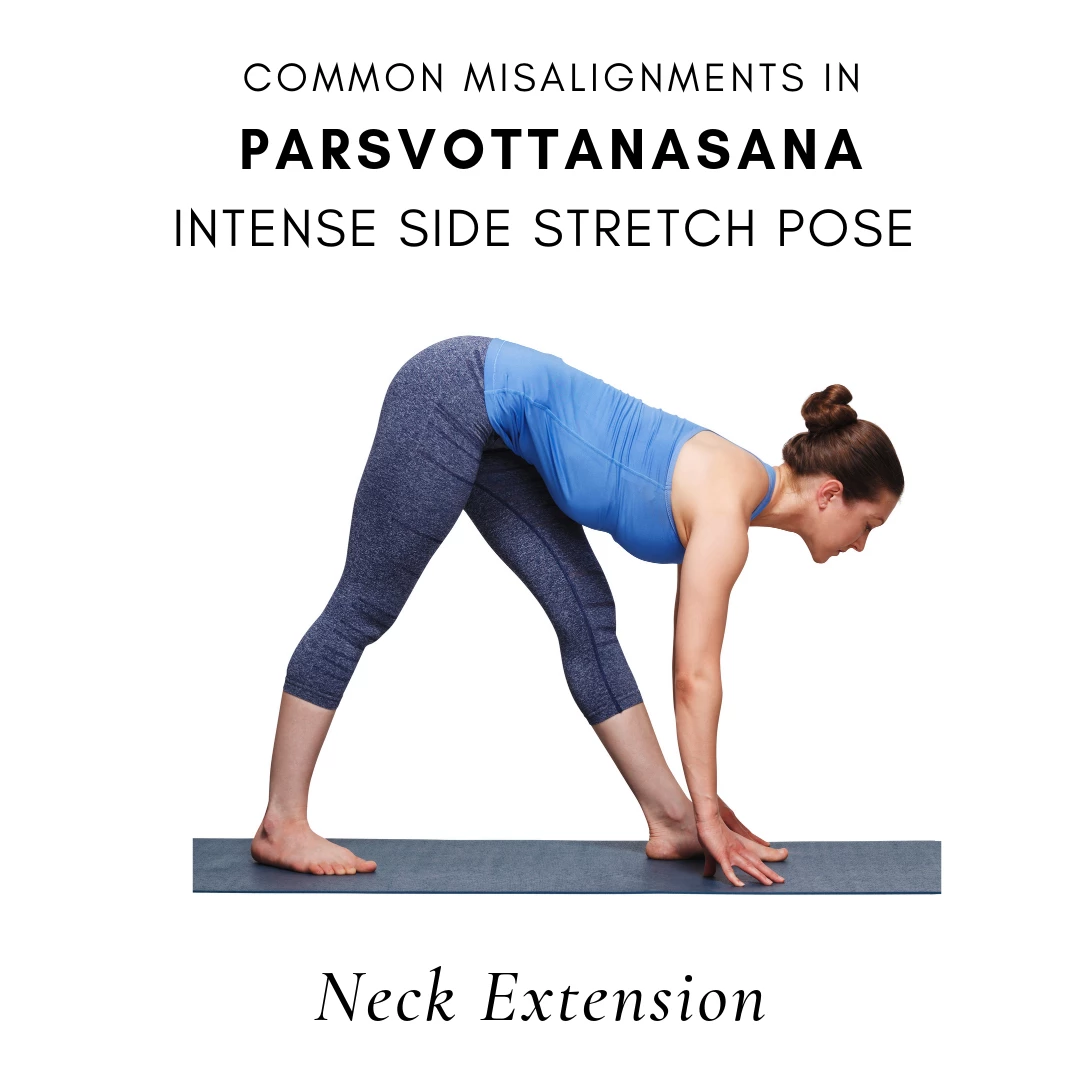
Go for Ease Rather Than for Maximum Stretch
Finally, because so many asana photos show people turning their heads to look up toward the sky in Triangle Pose (Trikonasana) and Side Angle Pose (Parsvakonasana), this is often misconstrued as the fullest expression of these poses. Turning your head in these poses can strain your neck. I prefer to practice and teach these poses with the head in a neutral position—facing straight ahead. If you turn your head at all in these poses—and it’s certainly not necessary—turn only for the last breath or two.
The core of neck pain prevention is to be conscious of your neck’s relationship to the thoracic spine. Because our necks are inherently mobile, we tend to overuse that mobility in our practice. In every pose, make sure your neck follows the trajectory of your thoracic spine. This will likely mean that you won’t be stretching your neck as much as you’re used to. Avoid flexing, extending, or twisting so far that you feel the strain.
Yoga for Neck Pain: Relax Your Jaw
The jaw and neck are intimately connected. How we hold our jaws—in daily life as well as in yoga class—influences neck comfort or discomfort. Try this: press your teeth together and feel the muscles in the back of your neck. Then let your teeth part and feel the muscles in the back of your neck. Feel a difference?
Letting your teeth part is one element of relaxing your jaw. But there’s one other refinement. Simply opening your mouth is not enough. When you relax your jaw, do so from the back of the jaw, at the joint where it meets the skull.
Yoga Poses To Ease Neck Pain
Yoga for neck pain can include lots of poses. Really, any pose done with an awareness of our head, neck, and jaw (as detailed above) can be supportive of your neck. Here are a couple of my favorite poses that specifically help ease the neck. Remember to keep your jaw relaxed and your head connected!
1. Revolved Belly Pose (Jathara Parivartanasana) with Neck Rolls
- In Revolved Belly Pose or any other supine twist, roll your head very slowly and gently side to side.
- Stay inside your comfort zone. In other words, don’t try to stretch your neck muscles.
- After a minute or so, as your head rolls through the center, lift your knees and place the soles of your feet on the floor and relax.
- Take 30 to 60 seconds in this position and then switch sides.
2. Supported Fish Pose (Matsyasana)

Pain in the back of our necks often originates in tight muscles in the chest and shoulders. A restorative Matsyasana can help expand these muscles gently and naturally.
- Place two yoga blocks on their sides on the head end of your mat, one in front of the other. You may also use two firm blankets folded in a long, narrow rectangle and stacked so that they are five to six inches high. Place your blanket stack lengthwise on your mat.
- Sit in front of your blanket stack or blocks, so your pelvis is 8 to 10 inches in front of them. Then lean back onto your props so your lower ribs rest against the front edge.
- If you use blocks, you may feel the edge of the block digging into your back. If you don’t enjoy this sensation, place a blanket or folded towel over your blocks to soften the edges.
- If your head is tilting back, this pose will get uncomfortable fairly quickly. You can remedy this by placing a folded blanket under your head and neck to elevate them. A throw pillow also works well for this. Make sure that your head support is under your neck as well. This pose should be comfortable. Use as much height under your head as you need in order to feel relaxed.
- Now settle your torso down onto your props, letting your arms rest at about a 45-degree angle and turning your palms upward. Relax and breathe deeply for a minute or more. Feel free to stay as long as you like.
- To come up, move your arms in close to your body and use your forearms to support you as you sit upright. Lead with your heart, and let your head lift up last.
Refinements and Variations
- If you have a yoga strap handy, try this variation. Hold the strap with your hands shoulder-width apart and pull out on the strap as if you’re going to stretch it. This creates an extra opening in the outer chest. But it is fine to stretch your arms overhead without using a belt. After 5 to 10 breaths extending your arms, relax and return your arms to 45 degrees at your sides.
- Take care to keep your eyes, jaw, and throat relaxed as you practice both the passive and active variations, and stay grounded through your hips and legs.
- Make sure that your head and neck are supported by folded yoga blankets so that they stay connected to your thoracic spine. When you first practice this pose, have your yoga teacher give you feedback on your head position. If your chin is higher than your forehead in this pose, you’ll need to elevate your head with one or more yoga blankets. Make sure that the blanket(s) also support your neck.
Also, read...
Yoga for Neck Pain: 2 Relaxing Poses
Relax Your Neck and Upper Back: A Standing Sequence for Upper-Body Tension
Related courses
Exploring the Stages of Being: The Yoga of Inner Peace
Livestream with Ellen Saltonstall: Yoga for Bone Health, Strength and Balance

Charlotte Bell began practicing yoga in 1982 and began teaching in 1986. She was certified by B.K.S. Iyengar in 1989 following a trip to Pune. In 1986, she began practicing Insight Meditation with her mentors Pujari and Abhilasha Keays. Her asana classes blend mindfulness with physical movement. Charlotte writes a column for Catalyst Magazine and serves as editor for Yoga U Online. She is the author of two books: Mindful Yoga, Mindful Life, and Yoga for Meditators, both published by Rodmell Press. She also edits Hugger Mugger Yoga Products’ blog and is a founding board member for GreenTREE Yoga, a non-profit that brings yoga to underserved populations. A lifelong musician, she plays oboe and English horn in the Salt Lake Symphony and the folk sextet Red Rock Rondo whose 2010 PBS music special won two Emmys.

